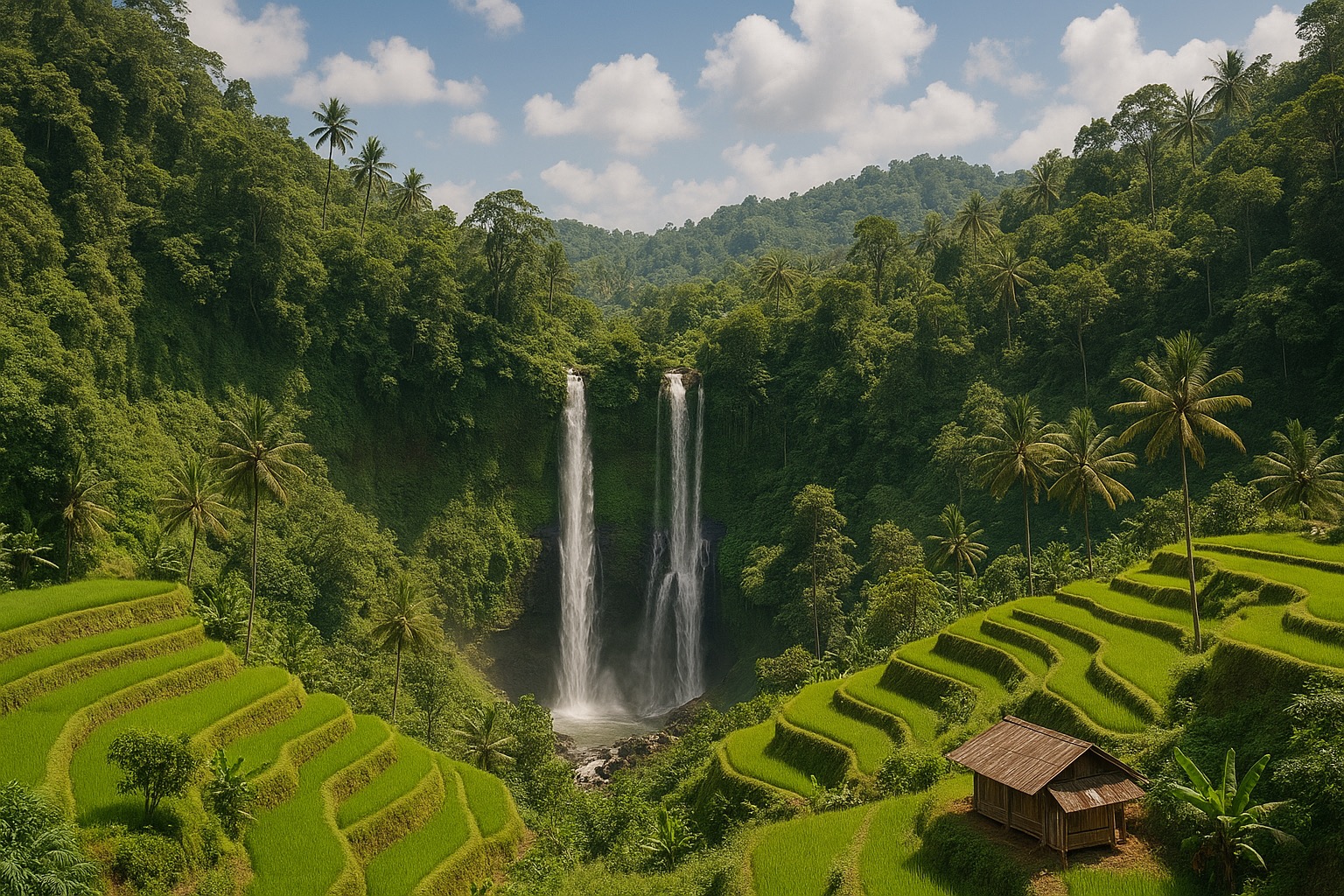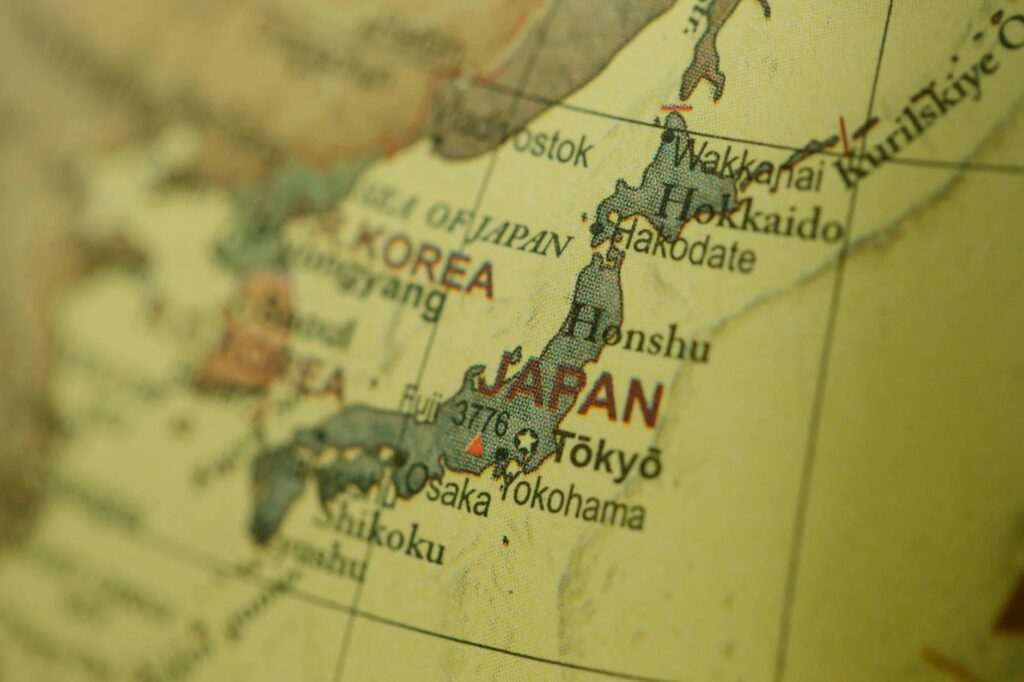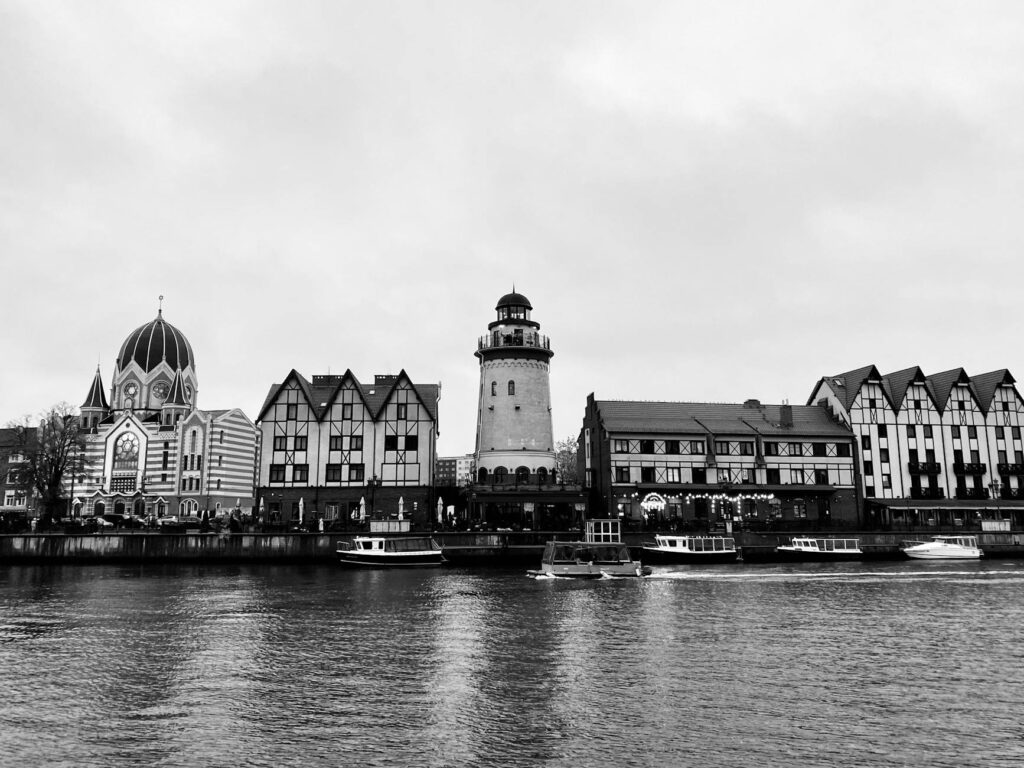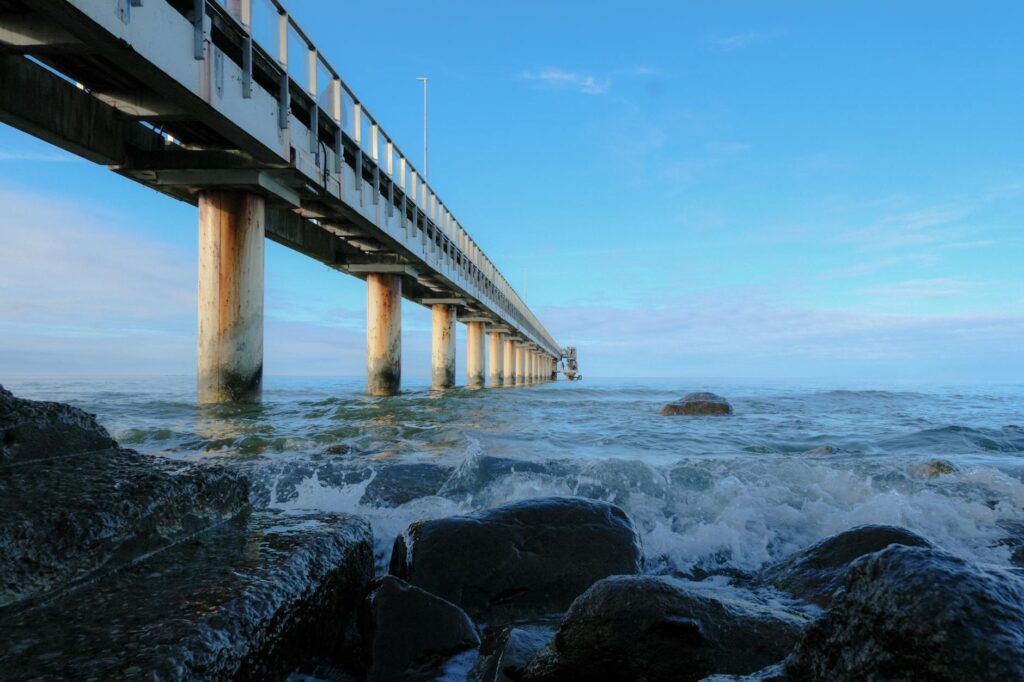
Kaliningrad, Russia: A European-Style City Off the Typical Travel Map
Nestled between Poland and Lithuania along the Baltic Sea coast, Kaliningrad stands out as a Russian exclave that feels more European than Russian. Once known as Königsberg, this city carries a mix of history, culture, and architecture reminiscent of old Europe. Despite its charm and unique location, Kaliningrad often flies under the radar for travelers exploring the continent.
Its distinct position makes it a rare destination—part of Russia geographically isolated amid well-known European neighbors. This means you get a chance to experience a blend of Russian influence and European heritage in one place. The city’s rich past, from medieval architecture to museums and coastal nature reserves, offers plenty to discover beyond the usual tourist paths.
A Unique Geopolitical and Historical Context
Kaliningrad’s story is unlike any other European city. Its location alone raises questions: How does a Russian city end up nestled between Poland and Lithuania, wrapped by the European Union? This peculiar positioning carries a heavyweight of history and current tensions that shape the region’s identity, borders, and daily life. Understanding Kaliningrad means looking deeper into its geographical significance, its journey from Königsberg to Kaliningrad, and the geopolitical challenges it faces today.
Geographical Significance
Kaliningrad is a small piece of Russia cut off from the mainland, sandwiched between Poland to the south and Lithuania to the north and east. This creates what’s known as a Russian exclave—territory politically part of Russia but physically separated from it. Its location on the Baltic Sea coast grants access to key maritime routes.
This spot is no accident. Kaliningrad’s strategic military value lies in its ability to control the southern Baltic Sea and serve as a base for Russia’s naval and missile forces. Its position near NATO countries adds a layer of tension, making it a focal point in European security discussions. Poland and Lithuania’s EU and NATO memberships mean Kaliningrad acts like a stronghold or bridgehead on Russia’s western frontier, packed with military assets and infrastructure designed to protect and project Russian power in the region.
Historical Evolution from Königsberg to Kaliningrad
The city of Kaliningrad was originally Königsberg, founded in the 13th century by the Teutonic Knights. For centuries, it thrived as part of East Prussia, a German region with rich culture and history. Königsberg was known for its university, philosophers (like Immanuel Kant), and architectural charm.
World War II altered everything. The city was heavily bombed and ultimately captured by Soviet forces in 1945. The 1945 Potsdam Agreement placed Königsberg and the surrounding area under Soviet control. In 1946, the city was renamed Kaliningrad after Mikhail Kalinin, a Soviet leader. This marked the beginning of a new identity—one shaped by Soviet rule.
Post-war, the area was depopulated of its German residents and repopulated largely by Russians. Kaliningrad remained a closed military zone throughout the Cold War, with much of its rich German heritage replaced or hidden under Soviet influence. After the Soviet Union collapsed in 1991, Kaliningrad became a Russian exclave bordered by newly independent Lithuania, Poland, and an expanding European Union, isolating it but also creating a unique European-Russian mix.
For more on this intriguing history, the BBC’s Kaliningrad profile gives a solid overview.
Current Geopolitical Tensions and Implications
Today, Kaliningrad is a flashpoint in East-West relations. Surrounded by NATO members, it sits at the heart of military and political tensions between Russia and the West. Russia views Kaliningrad as a key strategic asset, while NATO countries see it as a potential threat.
There are three main challenges shaping Kaliningrad’s geopolitical landscape:
- NATO’s Presence: Kaliningrad is encircled by NATO forces. This proximity drives military build-up on both sides, with Russia stationing missiles and troops here to counter NATO influence.
- Sanctions and Isolation: Economic and travel sanctions on Russia since 2014, intensified after 2022, have hit Kaliningrad hard. Access routes to mainland Russia through Lithuania are complicated by political restrictions.
- Impact on Residents and Travelers: Locals face unique challenges due to the exclave status—restricted travel, economic uncertainty, and limited connection to Russia’s heartland. Travel advisories often warn visitors about the political sensitivities.
Despite these difficulties, Kaliningrad remains a living city where European architecture meets Russian culture, drawing those curious about this borderland’s story. For deep insights into Kaliningrad’s strategic role, check out the U.S. Naval Institute’s detailed analysis

Photo by Lara Jameson
Kaliningrad’s position between continents and cultures, its turbulent past, and its tense present all combine to make it a unique spot on the European map—a city shaped by geography and history, caught in the middle of politics that reach far beyond its borders.
Kaliningrad’s Architectural and Cultural Heritage
Kaliningrad’s story is told not just through its history but through its mix of architecture, art, and unique local traditions. Walking through its streets, you’ll spot a rare blend of medieval German designs, Russian soviet touches, and modern creative energy. This mix creates a cityscape that feels European yet distinctly Kaliningrad’s own. Let’s explore the landmarks and cultural highlights that give this city its character.
Medieval Landmarks and German Influences
Kaliningrad’s oldest sights reflect its German past when it was known as Königsberg. A walk through the city reveals traces of medieval history still standing strong or carefully recreated to preserve its heritage.
- Brandenburg Gate: Unlike its more famous namesake in Berlin, Kaliningrad’s Brandenburg Gate is a historic city gate built in the 1650s. It stands as a sturdy reminder of the city’s Prussian roots, featuring a classic brick Gothic design.
- Königsberg Castle Ruins: Once the heart of Königsberg, the castle was mostly destroyed during World War II. What remains today are ruins that tell stories of grandeur and conflict. Plans to reconstruct parts of the castle aim to reignite the medieval spirit.
- Fishing Village (Rybatsky Village): This area is especially charming, as it recreates a medieval harbor town with authentic wooden buildings and cobblestone streets. Originally developed in the early 20th century, today it blends old-world craft with bustling cafes, giving visitors a taste of Kaliningrad’s historical vibe.
This mix of preserved and revived medieval architecture creates a window into the city’s European past without feeling like a museum. You can almost hear the echoes of old Königsberg as you pass these sites.
Philosophical and Artistic Highlights
Kaliningrad is not just about bricks and ruins—it’s a city where ideas and creativity have flourished. The legacy of philosopher Immanuel Kant still permeates the city’s cultural life, while public art breathes life into open spaces.
- Kant’s Island (Immanuel Kant Island): Located by the Pregolya River, this peaceful spot is dedicated to Kaliningrad’s most famous thinker. The small island features sculptures, a museum, and open spaces celebrating Kant’s influence on philosophy and intellectual life.
- Königsberg Cathedral: This landmark combines history with art. The cathedral, rebuilt after wartime damage, serves as a site for concerts and exhibitions, particularly of classical music, enhancing its role as a cultural beacon.
- Local Sculpture Parks: Scattered around the city are sculpture parks showcasing modern and traditional artworks by local and international artists. These outdoor galleries invite visitors to reflect on the city’s rich cultural layers while enjoying fresh air and greenery.
These places turn Kaliningrad into a living gallery, where philosophical depth and artistic expression meet daily life.

Photo by Natasha Graffiti
Amber Heritage and Museums
Amber is more than just a fossilized resin here—it’s part of Kaliningrad’s identity and economy. The city is known worldwide as the amber capital, with a tradition that dates back thousands of years along the Baltic coast.
- Amber Museum: Housed in a former fort tower, the museum is a must-visit for anyone curious about amber’s history and beauty. It displays intricate amber carvings, archaeological finds, and modern art pieces made from this golden gemstone.
- Amber Exhibitions: Around the city and region, galleries and workshops offer glimpses into the amber craft. You can see artisans at work creating jewelry or decorative items and learn about the geological significance of the Baltic amber deposits.
Kaliningrad’s amber story links ancient natural history with human creativity, connecting you to a timeless resource treasured across cultures.
For visitors seeking to understand this fusion of natural wonder and cultural craftsmanship, the Amber Museum official site provides more details.
Kaliningrad’s architectural and cultural heritage reveals a city proud of its past and eager to showcase its unique blend of European influences and local traditions. Whether you’re fascinated by medieval history, inspired by art and philosophy, or drawn to amber’s allure, this city offers rich experiences off the beaten path.
Natural Attractions and Outdoor Experiences
Kaliningrad offers a refreshing alternative for travelers who want more than city sights. Its natural side is full of surprising beauty and outdoor adventures waiting to be explored. From vast sandy dunes to lush forests and calm lakes, there’s a lot here for nature lovers and those just looking to unwind. Let’s take a closer look at some of the top natural spots and outdoor spaces you won’t want to miss while visiting.
Curonian Spit National Park
The Curonian Spit National Park is a standout natural attraction that perfectly showcases the region’s unique landscape. This thin, sandy peninsula stretches along the Baltic Sea and is recognized as a UNESCO World Heritage site for good reason. You’ll find an incredible mix of landscapes here, from towering sand dunes to dense forests.
- Sand Dunes: Imagine walking on soft, rolling dunes that seem to go on forever. These natural sand formations shift with the wind, creating dramatic scenery and a rare coastal ecosystem. Climbing the dunes offers scenic views of the Baltic’s endless blue.
- Dancing Forest: One of the most unusual sights in the park is the Dancing Forest, where pine trees twist and curl in spirals and loops. The reason behind these peculiar shapes remains a bit of a mystery, adding a sense of wonder to your hike through these woods.
- Swan Lake Reserve: This quiet spot within the park is a protected wetland area where you can often spot migrating swans and other birds. It’s a peaceful place for birdwatching, photography, or simply soaking in the calm.
The Curonian Spit is a perfect blend of natural wonders that feels like stepping into a storybook setting. It also offers many hiking trails and spots for picnic and relaxation, making it an easy day trip from Kaliningrad city.

Photo by Евгений Качин
Urban Parks and Coastal Access
If you prefer green spaces near the city or want to enjoy the Baltic coast without leaving town, Kaliningrad offers great options for outdoor relaxation and recreation.
- Kaliningrad Central Park: This sprawling urban park is a popular spot for locals and visitors alike. With well-kept walking paths, playgrounds, and open fields, it’s ideal for a stroll, a jog, or a picnic. The park’s mix of mature trees and gardens creates a peaceful green escape in the heart of the city.
- Coastal areas: Kaliningrad’s position on the Baltic Sea means easy access to scenic coastal spots and beaches just a short trip from the city center. Beaches like the Beach Promenade provide wide sandy stretches perfect for sunbathing, swimming, or simply watching the waves. These coastal zones are also excellent for biking or enjoying fresh sea air during a leisurely walk.
Combining these parks and coastal access points, Kaliningrad creates an inviting outdoor scene for visitors who want to balance city life with nature. Whether you’re up for an active day or a quiet moment by the water, these spaces fit the bill.
For more ideas on nature and parks in Kaliningrad, TripAdvisor’s Nature & Parks in Kaliningrad Oblast page has great user reviews and details.
Together, the natural attractions and urban outdoor experiences in Kaliningrad make this exclave more than just a city with history—it’s a place to connect with the Baltic’s raw and serene beauty.
Practical Travel Tips and Visitor Information
Visiting Kaliningrad offers a unique experience packed with history, culture, and natural beauty. However, because it’s a Russian exclave nestled between European Union countries, traveling here involves some special considerations. Here’s what you need to know about getting there, moving around, entry rules, language, currency, and safety to make your visit smooth and enjoyable.
Access and Transportation Options
Getting to Kaliningrad is straightforward, especially if you plan ahead. The main gateway for air travelers is Khrabrovo Airport, located about 20 km from the city center. It connects Kaliningrad with Moscow and several other Russian cities. Flights are frequent, but keep in mind that direct international flights are rare due to its exclave status, so many travelers transfer through Moscow or other Russian hubs.
Once you arrive, the city’s public transportation is easy to navigate:
- Buses and minibuses: The most common way locals and visitors get around. Bus routes cover most parts of the city and offer affordable rides.
- Trams: Kaliningrad still operates a tram network that connects various neighborhoods, giving a scenic and relaxed way to explore.
- Taxis: Widely available, including ride-hailing apps, taxis are convenient for quick trips or when public transport isn’t ideal.
Travelers often wonder about crossing borders from neighboring countries. Kaliningrad borders Poland and Lithuania, and road or rail connections exist, but crossing requires valid visas and border checks, which can add time. Trains and buses connect Kaliningrad to Lithuania and Poland, but current geopolitical situations may affect schedules and accessibility. You can get detailed transport info and travel updates at the Kaliningrad Tourism Info Center.
Visa and Entry Guidelines
Kaliningrad’s visa rules are stricter than many European spots because it belongs to Russia, not the European Union. Most travelers need a Russian visa to enter Kaliningrad, even if only visiting the exclave. However, there is a special e-visa program available for citizens of several countries, allowing stays in Kaliningrad for up to eight days without a full Russian visa application process.
Transit to Kaliningrad often requires passing through Lithuania or Poland. Keep in mind:
- If you are crossing the Lithuanian or Polish borders, a Schengen visa may be required.
- Transit rules depend on your nationality and entry points, so check current regulations carefully.
- Restrictions can fluctuate based on geopolitical events, so verify your situation before traveling.
For a full list of what you need, visit the detailed Kaliningrad Travel Guide by Wikivoyage.
Language, Currency, and Communication
Russian is the official and dominant language in Kaliningrad. Outside of tourist areas, English is rarely spoken, so having basic Russian phrases or translation apps can help. However, many hotels, museums, and guided tours provide English-speaking staff or information for visitors.
The Russian ruble (RUB) is the currency used everywhere. Credit and debit cards are generally accepted in hotels, restaurants, and larger shops, but small vendors or markets may only take cash. ATMs are common in the city, so withdrawing some rubles on arrival is a good idea.
For communication, mobile coverage is good with several Russian providers. International SIM cards may have limited service, so consider buying a local SIM if you plan to stay longer or need reliable internet access.
Safety and Travel Advisories
Kaliningrad is generally safe for tourists who use common sense and stay aware of their surroundings. Petty crime like pickpocketing exists as in any city, so keep your belongings secure, especially in crowded places.
Political tensions between Russia and neighboring countries might cause occasional disruptions. The most important safety tips include:
- Keep updated on travel advisories from your government. Some countries recommend caution due to occasional geopolitical instability.
- Respect local laws and avoid discussing sensitive political topics in public.
- Register with your embassy or consulate if visiting for an extended period.
- Use official taxis or trusted transportation options at night.
Before traveling, check the latest travel advisories from official government websites to stay well informed.
Kaliningrad offers a rich travel experience for those who prepare wisely. Understanding these practical travel details helps you enjoy the city’s history and culture without surprises.

Photo by Artbustrais
Culinary Scene and Local Experiences
Kaliningrad offers a food scene that feels close to Europe but carries its own distinct twists. Here, Russian flavors meet Baltic freshness, along with a heritage influenced by German and Polish neighbors. This unique mix creates a culinary landscape where seaside delicacies and hearty dishes shine side by side. Whether you’re sampling smoked fish by the waterfront or enjoying local festivals flavored with traditional treats, Kaliningrad’s food and cultural experiences invite you to taste its history and hospitality.
Signature Dishes and Seafood Delights
The cuisine here thrives on the bounty of the Baltic Sea, making seafood a star feature of many meals. Smoked fish is a local favorite, delicately flavored and often enjoyed as an appetizer or snack. Oysters are also popular, harvested from nearby waters and served fresh on the half shell.
Kaliningrad retains classic dishes like Königsberger Klopse, meatballs simmered in a creamy caper sauce—a recipe rooted in the city’s old German identity. Other specialties include rye bread, hearty soups filled with local mushrooms and vegetables, and lighter Baltic-inspired salads.
If you want to try authentic flavors, watch for these dishes:
- Smoked Baltic herring and eel
- Fresh oysters from the Curonian Lagoon
- Königsberger Klopse (ground meatballs in white sauce with capers)
- Cold beetroot soup (borscht) with sour cream
- Baltic amber-hued dishes featuring local honey or amber-infused sweets
This mix of fish-forward recipes and comforting regional fare captures the spirit of Kaliningrad’s kitchen, tasting of the sea and centuries of cultural exchange.
Markets, Cafes, and Dining Spots
To experience local tastes, head to bustling markets where you can sample smoked fish and fresh produce directly from sellers. The Central Market in Kaliningrad is a lively place to explore seasonal ingredients and street snacks, giving a true feel of everyday life.
When it’s time for a sit-down meal, the city’s cafe and restaurant scene offers charming and casual spots as well as modern eateries. Waterfront dining here can’t be missed; places along the Pregolya River serve fresh seafood with views of passing boats and historic bridges. For a relaxed atmosphere, cozy cafes like those in the Fishing Village area offer locally roasted coffee and dishes cooked from traditional recipes.
Recommended spots include:
- Steindamm 99 — known for its mix of Russian and European dishes
- Sol Gastrobar — a modern take on local cuisine with fresh, seasonal ingredients
- Neighborhood cafes where locals gather for breakfast or late-night bites
These venues give you a chance to taste honest, fresh cooking and enjoy the friendly, slow-paced vibe unique to Kaliningrad. See more about food and dining options here.
Festivals and Cultural Events
Kaliningrad’s cultural calendar is dotted with events celebrating both its heritage and vibrant contemporary scene. Food festivals, music events, and art fairs bring locals and visitors together to enjoy the city’s creative energy.
Key annual events include:
- Baltic Amber Festival — highlighting the region’s amber tradition with exhibitions, crafts, and local food booths
- Kaliningrad Fish Festival — showcasing the freshest catches prepared by local chefs in lively street markets and stages
- Cultural Days of Königsberg — a celebration of the city’s German roots combining history, theater, and culinary tastings
- Music events like the Salt Wave Festival, offering contemporary and folk performances alongside street food stalls
These festivals not only entertain but provide a deep dive into local tastes and traditions, making them perfect for food lovers and culture seekers alike. To learn more about upcoming events in Kaliningrad, check out insights on culture and festivals and the festival calendar.
Kaliningrad’s culinary and cultural offerings invite you to savor a place where sea flavors meet old-world recipes and lively traditions. This is a city where every meal tells a story, and every festival captures a moment in its rich, layered history.
Conclusion
Kaliningrad offers a rare mix of European charm and Russian heritage that few places can match. It feels like a slice of Europe, yet stands apart because of its unique history and location. Travelers who venture here can experience a city shaped by diverse cultures, rich architecture, amber treasures, and stunning natural beauty—all while understanding the complex geopolitical backdrop that influences life in the region.
For those looking to explore off the common travel routes and enjoy something different, Kaliningrad is worth considering. Just remember to plan carefully, stay informed about entry requirements and local conditions, and embrace the chance to see a part of Europe that does not fit the usual mold. The city has stories to tell at every corner, making it a memorable and thoughtful destination.
